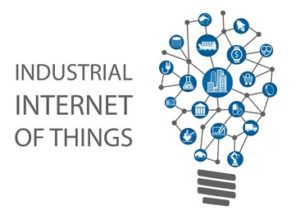How the Industrial Internet of Things is Changing the Electrical Industry
Blog: Apriso Blog
 Automation is an inevitable part of many industries, and the logical next step is automated systems that essentially communicate with one another. It’s commonly known as the Internet of Things (IoT) and it is transforming how businesses operate. It’s an exciting trend and one that has accelerated dramatically in just the last few years. Connectivity is better, programming is smarter, and the manufacturing tasks that stand to benefit are now beginning to embrace the change.
Automation is an inevitable part of many industries, and the logical next step is automated systems that essentially communicate with one another. It’s commonly known as the Internet of Things (IoT) and it is transforming how businesses operate. It’s an exciting trend and one that has accelerated dramatically in just the last few years. Connectivity is better, programming is smarter, and the manufacturing tasks that stand to benefit are now beginning to embrace the change.
The electrical industry is one that is ideal for adopting new technologies that increase efficiency. At virtually every level, processes can be improved with the help of intercommunicating systems and devices.
What Is the Industrial Internet of Things?
Generally speaking, IoT refers to networks that allow devices to communicate with one another. Just as two employees could send emails to each other in order to complete a task, the IOT allows devices to do the same — all based on careful, deliberate programming.
The Industrial Internet of Things (IIOT) means the same, only it is specific to IOT as it relates to manufacturing and other industrial processes. Put more simply, if the IOT allows a security camera to communicate with your cellphone or your cellphone to your thermostat, then the IIOT allows large-scale mechanical equipment to communicate with different machines along an assembly line. Right now, it’s a technology that’s still in a relatively early stage, but as more equipment is built with interconnectivity in mind, the IIOT is expanding.
Here are just a few of the key benefits of the IIOT for the electrical and manufacturing industries:
Automation
As noted above, the IIOT is, at its heart, about automating information flow— and in the electrical industry, automation can save you a lot of headaches. Automation reduces the risk of human error, and it ensures that all processes are carried out consistently. By allowing machines to communicate with one another, automation can be greatly simplified. In the electrical industry, the trend is to harness IIOT to better monitor electrical grids and respond much more quickly to power outages.
Tracking
In manufacturing, accountability is key — and you likely have to account for plenty. When you can track every stage of the manufacturing process, you have more control over the end product. You can also reduce potentially costly mistakes that might result from losing track of any given process or product.
Efficiency
Electrical processes that use the IIOT are streamlined. By eliminating unnecessary “middle men” who likely operate more slowly and are more prone to mistakes, the IIOT has unlocked a new world of efficiency for the manufacturing and electrical industries. For that reason, the IIOT is increasingly seen as a smart investment for manufacturers. The efficiency and increased productivity alone are huge benefits.
Access and Visibility
With the IIOT, virtually every process can be logged and more closely monitored. This level of transparency means that an electrical company or manufacturer can have much greater visibility and access to inner workings. What that means is that you can constantly be improving your processes, and you can see exactly what is and is not performing optimally.
Supervisory control and data acquisition (SCADA) systems have long been incorporated in the electrical industry. As IIOT is implemented, electrical facilities will be able to use more sophisticated sensors and actuators to collect data in real time.
Cohesion
The IIOT is also being employed in ways that improve how electrical companies work with customers’ systems. Advanced metering infrastructure (AMI) systems are a smart way to meter and manage energy use. In short, these two-way communication systems help to transfer data between the electrical companies and customers, helping both sides be more efficient.
Better Maintenance
Maintenance has long been one of the costliest and most time-consuming elements of manufacturing, and without the IIOT, there is plenty of room for error. Outside of regular maintenance checks, you largely depend on luck to catch problems that can be corrected through maintenance. Worse, you are forced to address the problem only after it’s resulted in malfunction. The IIOT gives manufacturers and electrical companies a key tool in getting ahead of maintenance issues by more easily spotting the warning signs early. What’s more, the IIOT gives us the tools to perform maintenance in a smarter way.
Because it’s still a young concept, the IIOT is likely to evolve to encompass even more processes to be even more efficient. The manufacturers and electrical companies that will thrive will be the ones that embrace and incorporate the IIOT. It will be exciting to see where the trend takes us next.
If you liked this article, here are others you might also find interesting:
- Do Manufacturers Need a New IIoT Platform?
- Is Data the New King of Manufacturing Technology?
- What is Your Plan to Improve Data Access & Analysis?
Leave a Comment
You must be logged in to post a comment.







